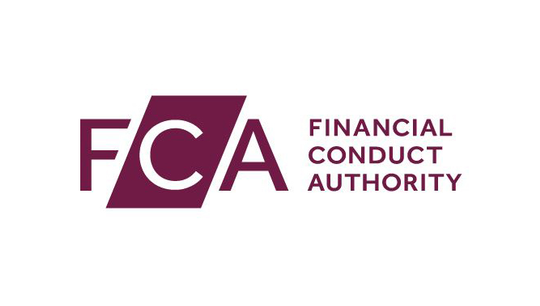Opening up Australia's financial services industry
By Ben Benson, Special Counsel, and Elizabeth Hastilow, Partner, K&L Gates
Published: 14 October 2016
Australia's financial services sector sits at the core of its economy. With around $2.5 trillion in assets managed from Australia, its investment management market is ranked the fourth largest in the world and the largest in the Asia-Pacific region. However, considering less than 5% of those assets represent funds sourced from overseas, the industry could be viewed as relatively insular. In recent years participants and the government alike have recognised the benefits of opening up the industry by facilitating foreign managers operating in Australia and the ability of local managers to capture foreign capital.
Building upon this mutual recognition, waves of policy reforms aimed at breaking barriers and creating opportunities have emerged and which, once fully implemented, will strengthen all aspects of Australia's financial services industry.
Johnson Report reforms
Competition among financial services centres for highly mobile global capital is intense. To enhance inbound investment into Australia and the offshore activities of Australian fund managers, the government and industry have been forced to address a number of barriers. As part of that effort the government established the Australian Financial Centre Forum which has been the driving force behind many of the recent reforms. The Forum's review of the financial services sector resulted in its 2009 report Australia as a Financial Centre – Building on Our Strengths (the Johnson Report) and set out a number of key recommendations, including the implementation of the following:
- An Asia Region Funds Passport (Passport);
- New tax flow-through collective investment vehicles (CIVs) such as corporate vehicles and limited partnerships that are familiar to foreign investors; and
- Tax exemptions and concessions for foreign investors.
Each of these have recently reached noteworthy milestones.
Passport to growth
On 28 April 2016 representatives from Australia, Japan, South Korea and New Zealand signed the final Memorandum of Cooperation (Memorandum) setting out the internationally agreed rules and cooperation mechanisms for the Passport. The Memorandum came into effect on 30 June 2016 and has also added Thailand as a signatory. It is anticipated that Singapore and the Philippines will also follow. The Passport, expected to be operational by the end of 2017, will be the most far-reaching multilateral regulatory framework in the Asia-Pacific region allowing for the cross-border marketing and distribution of certain collective investment schemes. Participating economies are required to implement any legislative arrangements necessary to give effect to the "Passport Rules" regulating the operation of "Passport Funds" within 18 months from 30 June 2016. It should be noted that many 'hedge funds' will not qualify as a Passport Fund because of the restrictions on borrowing, short selling and other aspects of a fund's portfolio allocation imposed by the Passport Rules.
The Passport is widely seen as a key building block to increasing financial integration across the Asia-Pacific region and, in particular, to facilitating the flow of capital into the region's equity and debt markets. The Passport is considered an enabler for the growth of regional savings and the creation of investment products specifically designed in the region, including for the region's growing retirement population and wealthy middle class looking for investment solutions to meet their specific needs. The Passport presents a powerful opportunity for fund managers from participating economies to target new markets across the region.
Improving access to offshore markets for local managers might be expected to provide cost savings through increased scale, enhance regional experiences providing further opportunities to export those skills with flow on consequences for the wider economy. Offshore fund managers selling products into a domestic market might also be expected to benefit that domestic economy by providing greater competition and investment choice for investors putting downward pressure on fees. The Asia-Pacific Economic Cooperation estimates that the introduction of the Passport will create approximately 170,000 new jobs in the Asia-Pacific region over the next five years and save Asian investors US$20 billion per annum in investment management costs.
However, there remain two major reasons why a foreign investor might be unwilling to invest in an Australian product: unfamiliar vehicles providing tax flow through treatment and complex, uncertain, and uncompetitive tax treatment. Each of these impediments is also in the process of being addressed in preparation for the implementation of the Passport.
New Collective Investment Vehicles
The 2015/2016 Federal Budget ushered in a new era in investment management in Australia with the announcement that the Federal Government will introduce a new tax and regulatory framework for two new CIVs. The two new CIVs will consist of a corporate CIV and a limited partnership CIV. In accordance with the Budget announcement, the corporate CIV will be introduced by 1 July 2017 while the limited partnership CIV will be introduced by 1 July 2018. Both the corporate and limited partnership CIVs will be required to meet similar eligibility criteria as managed investment trusts (the current vehicle of choice for hedge funds and other pooled funds). For example, they will need to be widely held and be engaged in primarily passive investment.
These new CIVs will be crucial for Australian fund managers and operators in the context of the Passport but will also provide an attractive vehicle to fund managers outside of the Passport regime. It is expected that if appropriate models are developed and combined with corporate and tax rollover relief, many managers may rollover their existing suite of funds to one of the new CIVs.
For Australian managers to operate in the Passport, Australia requires alternative forms of collective investment vehicles. Presently, the sole form available in Australia is the unit trust operated as a managed investment scheme. While it has been a mostly robust structure in Australia, it is unique to Australia, not used anywhere else in the world and is unfamiliar to foreign investors. Traditionally, foreign investors have been dissuaded from investing in Australian funds due to their lack of familiarity with the unit trust structure and some of the legal consequences arising from its use. This can put off investors entirely or require an Australian manager to devote significant time and resources to engender the level of comfort and understanding required before an investor is willing to deploy capital outside its home jurisdiction. Foreign investors are, however, very familiar with both corporate and limited partnership CIVs and so their introduction can only boost efforts to attract offshore capital to Australia.
The new corporate and limited partnership CIVs are expected to:
- Enhance the ability of Australian fund managers to utilise the Passport;
- Reduce barriers associated with Australia's unit trust structure by providing alternative investment vehicle options for foreign investors;
- Attract new foreign investors to Australia; and
- Improve the overall marketability of Australia's managed funds internationally.
However, the new CIVs must form only part of the new landscape. Successful implementation of the Passport requires tax neutrality to ensure that domestic and foreign funds offered in the same jurisdiction are not subject to divergent or discriminatory tax treatments. Continued reform to the rules regulating the taxation of foreign investors will therefore be needed.
Investment Manager Regime and Attribution Managed Investment Trusts
Between 2012 and 2015 Australia introduced an Investment Manager Regime (IMR) intended to remove tax impediments to investing in Australia with the aim of attracting foreign investment and promoting the use of Australian fund managers. The IMR is designed to place individual foreign investors that invest into Australia through a foreign fund in the same tax position in relation to disposal gains and disposal losses as they would have typically been had they made their share of the fund’s investments directly (rather than through the fund). The regime is also designed to ensure that when a foreign investor invests through an independent Australian fund manager it will be in the same position, in relation to disposal gains and losses, as if it had invested directly.
Australia has also recently introduced a new tax system for certain managed investment vehicles (to be known as Attribution Managed Investment Trusts or AMITs) which elect into the regime. The underlying reason for introducing the AMIT regime is to provide greater certainty for investors, and for funds managers, as to the operation of the tax rules which apply to manage investment trusts. The current regime, designed historically for closely held investments, has been considered unsuitable for wholesale and retail funds.
Australia currently has a Managed Investment Trust (MIT) regime targeted at foreign investors seeking to make passive investments in Australian assets, particularly real property and infrastructure assets. This regime allows trust assets to be treated as being on capital account, so that any gains on realisation of those assets (other than direct and indirect interests in Australian real property) are generally exempt from tax in the hands of an offshore investor. The current MIT regime also imposes a final and concessional tax on taxable gains and on rent income generally at the rate of 15%. AMITs, as a type of MIT, will be entitled to these concessions. The main advantages of the new AMIT regime are:
- The ability to attribute income types on a fair and reasonable basis;
- An AMIT is treated in many respects as a fiscally transparent vehicle as trust income retains its character when distributed, and investors are treated as if they had received the item of income directly;
- The ability to segregate for tax purposes the assets and liabilities between classes; and
- Where a trustee is unable to accurately calculate investor entitlements at year end, and a variance to the true number is later discovered, an 'overs and unders' regime allows the variance to be reconciled by adjusting members' entitlements to trust income in the year of discovery, rather than (as is currently the case) requiring investor statements to be re-issued, and investors potentially needing to seek amendments to tax returns lodged.
Conclusion
Australia's investment management industry is internationally recognised for its size, sophistication, efficiency and competitiveness. It has developed its well-earned reputation largely around its effectiveness in managing a large domestic pool of assets. Its skills have outgrown this significant pool and are attractive to overseas investors. The series of interconnected policy reforms when implemented in an integrated fashion will combine to assist Australia's investment management industry in becoming both a significant exporter of financial services products and a key contributor to Australia's gross domestic product.
This publication is for informational purposes and does not contain or convey legal advice. The information herein should not be used or relied upon in regard to any particular facts or circumstances without first consulting a lawyer. Any views expressed herein are those of the author(s) and not necessarily those of the law firm’s clients.



